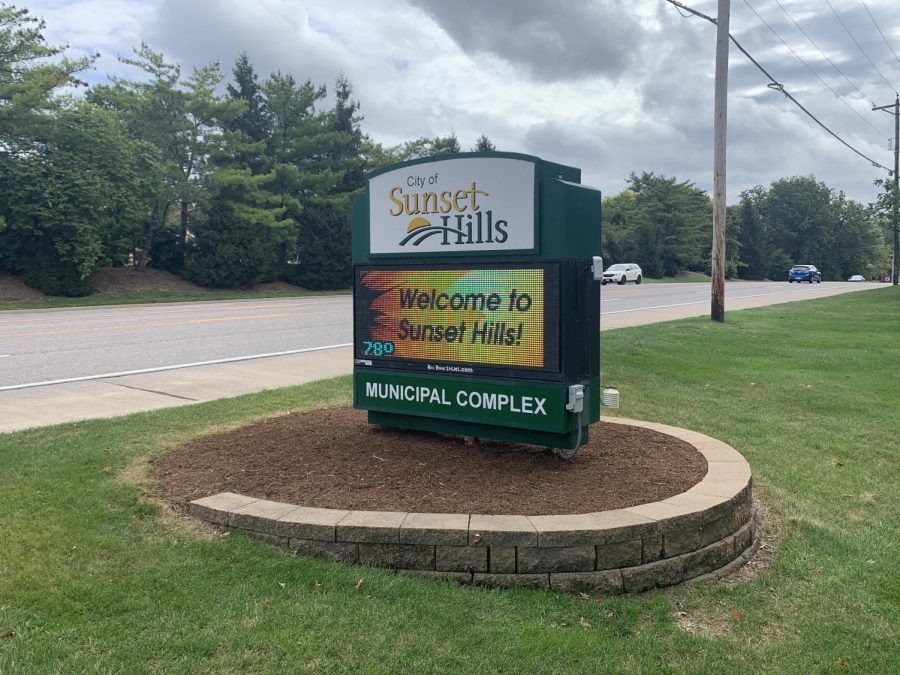Grantwood Village’s request to annex the former Busch property along Gravois Road recently was taken under submission by the St. Louis County Boundary Commission.
About 75 people attended a public hearing conducted by the commission last week on the village’s proposal. The commission has until April 1 to decide if the annexation proposal will be placed before voters.
The village wants to add roughly 100 acres of unincorporated land south of Gravois Road. The property once was owned by Andrew Busch and is across from Grant’s Farm. It generally is bounded by Gravois Road, Musick Road, the Affton Athletic Association, Lakeshire subdivision, Sunset Memorial Park, McNary Road and other unincorporated subdivisions.
The area incorporates several zoning districts, including mixed use development, residential, non-urban and some flood-plain. It is mostly undeveloped.
A plan of intent submitted to the commission in July called for the annexation of an additional 16 acres between McNary Road and Cor Jesu Academy for a total annexation area of roughly 95 acres.
However, the village recently learned Cor Jesu, which owns six of those 16 acres and is in the process of securing the rest, plans to build a gymnasium and a theater on the property. The annexation, as initially proposed, would put the campus in two jurisdictions and potentially could cause complications, according to Cor Jesu officials.
The school has requested that the 16 acres be excluded from annexation, and the village has agreed to amend its proposal.
During last week’s public hearing, village and county officials disputed which entity could best manage the area to be annexed.
Attorney Paul Rost, representing the village, told the boundary commission the proposed annexation is a “logical extension” of Grantwood’s boundary. The village would be able to provide such services as permits, inspections and planning to the annexed area in-house with little to no change in cost, he said, noting the most significant expense would be police protection, which the village already receives from the county.
“The economic benefit easily offsets the cost to the village. Nothing over there needs to be done now,” Rost said. “In the future, as development comes, income will come with it.”
If it annexed the property, the village would have some control over any future development, Trustee Mike Jones told the commission. Residents rallied a few years ago against a proposed development of the property they felt was unsuitable.
In November 2005, Busch agreed to sell his property to the Gravois Co. — a collection of local home builders — for $23.6 million, or $250,000 per acre. The County Council subsequently adopted two ordinances in May 2006 approving zoning and a planned-environment unit, or PEU, on Busch’s property for a 439-home subdivision, the Villages at Grant’s Trail.
But Jones and several other villagers sued the county the following month, contending the PEU ordinance would only allow for a maximum of 363 homes at the site of the Villages at Grant’s Trail instead of the planned 439. The suit halted the sale of the property to Gravois Co., and the developer eventually backed out of the project.
Busch later sold part of the land to Erickson Retirement Communities, which in 2008 received county approval for its plan to construct 1,500 units on more than 80 acres of the property. But the developer later filed for bankruptcy and was sold, effectively killing plans for the proposed retirement community.
Glenn Powers, director of the county Department of Planning, told the commission last week that while there currently is no developer for the property, Erickson’s county-approved plan for a retirement community still is valid.
“Somebody could pick it up and run with it as it is, or someone could propose something completely different,” he said. “Right now it’s all speculation.”
Powers said the county is opposed to the village’s proposal.
The county is in a “much better position” than the village to manage the property and to “ensure the best development” of it in the future, Powers contended.
He questioned whether the village truly could handle — or afford — the annexation.
Sovereign Bank foreclosed on Erickson’s part of the property after the developer went bankrupt. John Hessel, an attorney for the bank, said during a period for public comment at the hearing that his client, which soon will own the land, also wants the property to remain under the county’s jurisdiction because of “uncertainties associated with the annexation” to the village.
“The purpose of this annexation is, by their (the village’s) own admission, to control future development. And I don’t blame them for that,” Hessel said. “On the other hand, I think it’s important to ask questions from my client’s standpoint as the bank that’s going to own the property. We have no guidance whatsoever as to what the future use of that property can be. There’s no plan in place. There’s no planning department in place (in the village).”
Rost said the village wouldn’t have requested the annexation if it were unable to handle it.
“The village has been around since 1937. It’s not like it doesn’t know how to pave streets,” he said. “It’s not like the village has never dealt with development before.
“They have. They know what to do. They can handle it. They’re big boys and girls.”
(Note: Updated to correct proposed annexation acreage. While the village’s proposal states the property is roughly 95 acres, Glenn Powers, director of the county Department of Planning, says the county’s GPS equipment calculated the total at 115 acres before excluding Cor Jesu.)





















